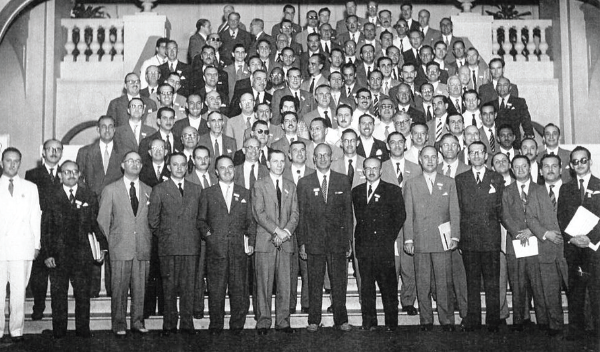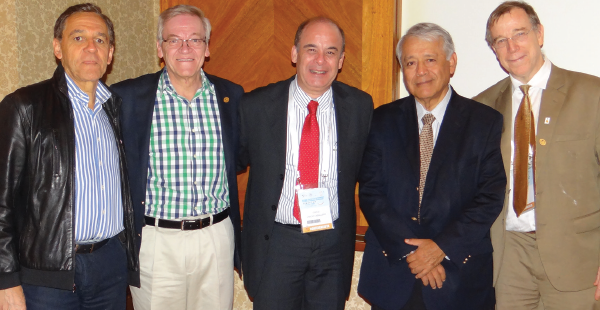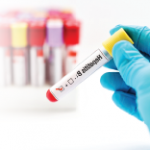The first organization dedicated to fighting rheumatic disease was the International League Against Rheumatism (ILAR), founded in 1928 under the guidance of a Dutch national, Dr. Jan van Breemen.
Interest in rheumatology quickly spread throughout the American continent, and the American Association for the Study and Control of Rheumatism met in Cleveland, for what they regarded as their first official meeting in 1934. This cumbersome title was changed in 1937 to the American Rheumatism Association (ARA). In 1985, the ARA formally separated from the Arthritis Foundation, with which it had merged in 1965, and renamed itself the American College of Rheumatology. To the south, Aníbal Ruiz Moreno, MD, founder of the Argentine League Against Rheumatism in 1937, and Prof. Fernando Herrera Ramos, founder of its Uruguayan counterpart in 1939, duly incorporated them to ILAR.
In 1941, Dr. Ruiz Moreno said, “Rheumatologists are a fraternity bound by science and heart.” Together with Dr. Herrera Ramos, Dr. Ruiz Moreno submitted the idea of an ILAR regional league to Ralph Pemberton, then president of ILAR. In 1942, by request of Pemberton, the ARA accepted the proposal set forth by the South American doctors.
A committee comprising doctors Russell Cecil, Robert Osgood, Ralph Boots, Loring Swain, Paul Holbrook and future Nobel Prize winner Philip Hench gave its final agreement and, soon afterward, with support from physicians in Canada, Chile, Brazil and Mexico, a path had been cleared to the creation of a society that grouped all rheumatologists in the continent. The committee suggested the creation of a provisional board to draw its charter, with Ruiz Moreno as president, Herrera Ramos as secretary, Richard Freyberg, from the U.S., as vice president and Wallace Graham, from Canada, as treasurer.

Attendees of the First Pan-American Congress of Rheumatology.
Next Steps
On May 31, 1944, after two years of hard work by the committee, numerous communications and under a bright spring sun, the Pan-American League for the Study and Control of Rheumatic Disease came into existence. A few days later, its name would be changed to the Pan-American League Against Rheumatism (PANLAR). A month later, Loring T. Swain, the first person to hold the position of secretary, announced its foundation to the medical community in the U.S. and abroad. In a letter addressed to the editor of JAMA, he wrote: “On June 15, I received a letter from Dr. Aníbal Ruiz Moreno of Buenos Aires, who has been chosen as the provisional director of the PANLAR committee, duly signaling that our Pan-American league is a reality.”
PANLAR would become the first ILAR regional league. Its first president was Dr. Ralph Pemberton, who acted as such until his death in 1949. Dr. Ruiz Moreno followed suit between 1949 and 1953, while his friend Dr. Herrera Ramos headed the institution between 1955 and 1959.

The members of PANLAR gathered during the 9th International congress in Toronto. All the founders but Ralph Pemberton posed for this picture: Aníbal Ruiz Moreno (1949–53), Fernando Herrera Ramos (1955-59); Richard Freyberg (1953–55), Graham Wallace (1959–63), Richard Smith (1967–70) and Javier Robles Gil, ILAR president (1961–65).
Conference Highlight
One of the most important rheumatology conferences took place during the postwar period in 1949. The VII ILAR Congress was held at New York’s Waldorf Astoria and assembled the specialty’s world elite for the first time since the Second World War.
The presentation of the dramatic effects of cortisone in the fast relief of pain and improved mobility of arthritis patients, perceived as a near-miracle that enabled them to walk again, made Philip Hench the big figure of the event. Hench was awarded the Nobel Prize the following year for his discovery.
That 1949 meeting was the setting for the discreet first meetings of the ILAR regional leagues, PANLAR, founded in 1944, and the European league, EULAR, founded in 1947. Six years after that ILAR conference, Hench would remain one of the most important figures rheumatology at the first Pan-American Congress of Rheumatology held in Rio de Janeiro and Sao Paulo in 1955. Held at the Copacabana, it featured an audience of 239 from 15 countries and provided an image of high quality and excellent organization.
The Asia Pacific League of Associations for Rheumatology (APLAR) was created in 1963, and the African League of Associations for Rheumatology (AFLAR) was founded in 1989.

PANLAR presidents of the past five terms are featured here: Antonio Ximénes (Brasil), Carlos Pineda (México), Carlo V. Caballero (Colombia), Luis Espinoza (Perú/U.S.), John Reveille (U.S.).
We Are All PANLAR
PANLAR has experienced tremendous growth. It now operates in four regions with 21 member countries: North (Canada, USA and Mexico), Central America (Guatemala, Honduras, El Salvador, Nicaragua, Costa Rica, Panama, Dominican Republic, Cuba), Bolivarian (Venezuela, Colombia, Ecuador, Peru and Bolivia), and Southern Cone (Argentina, Brazil, Chile, Paraguay and Uruguay). Study groups and updated bylaws were drafted during Antonio Reginato’s presidency in the first decade of the 21st century, and the entity was organized as a 501(c)(3) nonprofit based in Atlanta.
The 2016–18 Executive Committee, headed by Dr. Carlo V. Caballero (Colombia), President-Elect Enrique Soriano (Argentina), Secretary General Carlos Lozada (U.S.) and Former President Carlos Pineda (Mexico), drafted a six-year (2016–22) development plan, approved by the Governing Board, the purpose of which is to stimulate excellence of rheumatology in the American continent and to advance the shared vision of becoming the main supplier of education and science, practice standards and rheumatology in Latin America. One pillar of this development plan is innovation.
PANLAR will celebrate the 20th Pan-American Congress in Buenos Aires, the birthplace of Aníbal Ruiz Moreno, from April 7–10. More than 2,500 attendants and 500 medical research projects from all over America and the world are expected. Simultaneously, the First Pan-American Congress of Rheumatic Disease Patients will be held, as well as a gala dinner to commemorate our 75th anniversary. The book, PANLAR Throughout Its Evolution, detailing the organization’s rich history, will be launched during the meeting.
You are all warmly invited to Buenos Aires to join in this important celebration.
Carlo V. Caballero Uribe, MD, PhD, is an associate professor of medicine at the Universidad del Norte, in Barranquilla, Colombia. He is also the president of PANLAR (2016–18).
